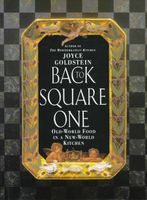Advertisement
Preparation info
- Serves
10 to 12
- Difficulty
Complex
Appears in
Published 1992
For as long as I’ve been living in San Francisco, sacripantina has been a popular dessert. Sacripante in Italian means blusterer or bully and also is the name of a character in Orlando Furioso, a poem-play that is performed in Sicily with life-size puppets. Nick Malgieri believes that the origin of this cake is Liguria, but his recipe has chocolate buttercream filling. I suspect that the cake I know as sacripantina is Sicilian in inspiration because of the zabaglione filling. This is our in


